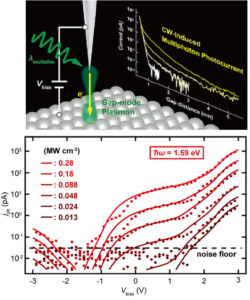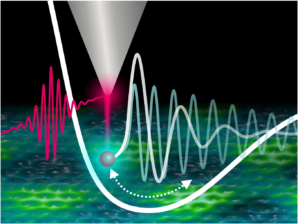We are interested in the spatio-temporal response of solid state surfaces, quantum materials, and nanostructures following ultrafast optical or electronic excitation. Our goal is to obtain an atomistic understanding of photoinduced processes on (sub-) nanometer length and femtosecond time scales by employing novel pump-probe schemes for ultrafast scanning probe microscopy (SPM). We envision to study, drive and control solid state matter in highly non-equilibrium states and probe its dynamics locally at atomic scales.
To achieve this goal, we are putting efforts into the development of ultrafast scanning probe methods, with a focus on broadband THz-gated STM combined with femtosecond optical excitation and optical photon-assisted femtosecond STM. Besides detecting the localized tunneling signals, we complement our methodological approach by local light detection and optical near-field techniques. For detailed information and updates, please follow our news below.
d

Spintronic terahertz emitters are powerful sources of ultra-broadband single-cycle terahertz (THz) fields, and are of particular interest for field-driven applications such as THz-STM. They work with any pump wavelength, and their polarity and polarization direction are easily adjustable. However, at high pump powers and high repetition rates, as required for THz-STM operation at high THz bias and measurable currents, STE operation is hampered by a significant increase in the local temperature. We resolved this long-standing issue by rotating the STE at a few 100 Hz. This distributes the absorbed power over a larger area and allows us to operate the STE at power densities far above the melting threshold of metallic films! We can now sent THz pulses with peak fields of 10 kV/cm into our THz-STM at 1 MHz repetition rate. (A. Vaitsi et al., arXiv:2404.16976)


